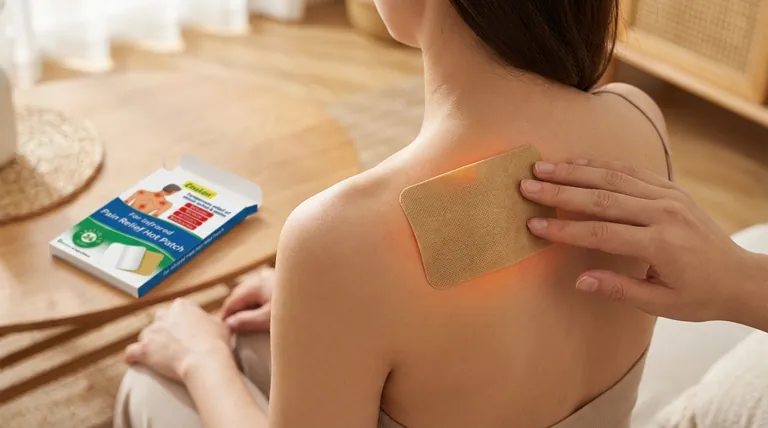Transdermal patches are innovative drug delivery systems designed to administer medications through the skin for systemic effects. These adhesive patches contain active pharmaceutical ingredients that gradually absorb into the bloodstream, offering controlled release over extended periods. They serve as alternatives to oral medications or injections, particularly beneficial for patients who have difficulty swallowing pills or require steady drug levels. Various types address conditions ranging from pain management to neurological disorders, with advantages including bypassing gastrointestinal metabolism and maintaining consistent therapeutic levels.

Key Points Explained:
-
Basic Mechanism and Design
- Transdermal patches are multi-layer adhesive systems containing:
- A drug reservoir or matrix
- A rate-controlling membrane (in some designs)
- Skin-adhesive components
- Protective backing layer
- The transdermal patch technology allows drugs to permeate through skin layers (stratum corneum → epidermis → dermis) into capillaries
- Transdermal patches are multi-layer adhesive systems containing:
-
Therapeutic Applications
- Nicotine replacement: Helps manage smoking cessation by maintaining stable nicotine levels, reducing withdrawal symptoms
-
Neurological treatments:
- Rivastigmine for Alzheimer's/Parkinson's dementia (avoids gastrointestinal side effects)
- Methylphenidate for ADHD (provides consistent daytime symptom control)
- Oncology support: Granisetron patches prevent chemotherapy-induced nausea through continuous 5HT3 receptor blockade
-
Pain management:
- Lidocaine/capsaicin combinations target localized neuropathic pain
- Opioid patches for chronic pain conditions
-
Clinical Advantages Over Traditional Delivery Methods
- Avoids first-pass liver metabolism (higher bioavailability for certain drugs)
- Maintains steady plasma concentrations (reduces peak-trough fluctuations)
- Improves compliance through:
- Simplified dosing regimens (often weekly application)
- Non-invasive administration
- Reduces gastrointestinal irritation (bypasses digestive system)
-
Special Patient Considerations
- Ideal for geriatric populations with polypharmacy concerns (minimizes drug interactions)
- Useful for pediatric patients with medication adherence challenges
- Requires proper skin preparation (clean, dry, hair-free application sites)
- Rotation of application sites prevents skin irritation
-
Emerging Developments
- Microneedle-enhanced patches for larger molecule delivery (e.g., proteins, vaccines)
- Smart patches with sensors for dose monitoring
- Combination therapies targeting multiple symptoms
Have you considered how transdermal technology could expand treatment options for patients with swallowing difficulties or unpredictable absorption? These discreet systems exemplify how pharmaceutical engineering creates solutions that integrate seamlessly into daily life while optimizing therapeutic outcomes.
Summary Table:
| Key Aspect | Details |
|---|---|
| Mechanism | Multi-layer adhesive system with drug reservoir, rate-controlling membrane, and skin-adhesive components |
| Applications | Pain management, nicotine replacement, neurological treatments, oncology support |
| Advantages | Avoids first-pass metabolism, steady drug levels, non-invasive, improves compliance |
| Patient Benefits | Ideal for geriatric/pediatric patients, reduces GI irritation, easy application |
| Emerging Tech | Microneedle patches, smart sensors, combination therapies |
Enhance your pharmaceutical offerings with advanced transdermal solutions!
At Enokon, we specialize in bulk manufacturing of high-quality transdermal patches and pain plasters for healthcare distributors and brands. Our expertise in custom R&D ensures tailored solutions for your specific therapeutic needs.
✅ Reliable drug delivery systems
✅ Custom formulations for diverse applications
✅ Technical support from development to production
Contact our team today to discuss how we can optimize your transdermal product line!
Visual Guide

Related Products
- Far Infrared Heat Pain Relief Patches Transdermal Patches
- Heating Pain Relief Patches for Menstrual Cramps
- Herbal Eye Protection Patch Eye Patch
- Menthol Gel Pain Relief Patch
- Icy Hot Menthol Medicine Pain Relief Patch
People Also Ask
- How quickly does the Deep Heat Pain Relief Back Patch activate and how long does it provide warmth? Get 16-Hour Relief
- Are heat patches safe for all body parts? Key Safety Zones and No-Go Areas Explained
- What types of pain can the Deep Heat Pain Relief Back Patch be used for? Targeted Relief for Muscles & Joints
- How do Deep Heat Pain Relief Patches provide pain relief? Discover the Drug-Free Mechanism
- What are the common side effects of using the medicated heat patch? Understanding Risks & Safe Use
















